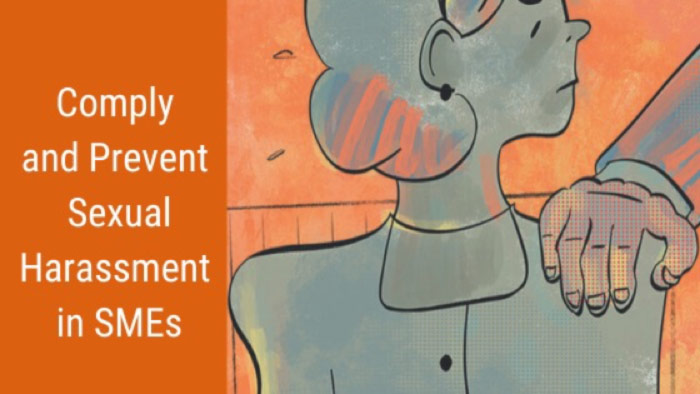Blog
The Compliance and Prevention of Sexual Harassment in SMEs
The HR Heads and CEOs of several SMEs have told to me that in the last 3 or 4 years they have not had a single case of harassment in their organization. They felt they were lucky to have good employees and work culture. Hence there was never a need to conduct a training on Sexual Harassment.
I invariably ask them the following:
- Do your employees understand what constitutes Sexual Harassment (SH)?
- Do they know that staring or gossip or even asking personal questions are forms of SH?
- And if employees encounter sexual harassment, would they know where to report it?’
My questions stem from the compelling data from various Surveys which shows that there are 3% to 4% are victims of sexual harassment in every organization, a staggering 50% of them do not report it. Also during this pandemic, instance of online harassment has increased 5 times.
When shown these ground realities, do the SMEs agree that they need to create a safe work environment for employees?
They always do!
And we guide them:
- To Comply with the ‘Sexual Harassment of Women at Workplace (Prevention, Prohibition and Redressal) Act 2013,’ and
- To institute practices that prevent sexual harassment from creeping in
Compliance with the PoSH Act
- Setting up an Internal Committee
- The ‘Internal Committee’ (IC) or ‘Internal Complaints Committee’ (ICC), redresses complaints of SH at the workplace. It should comprise a minimum of 4 members and half of them women; including an external member from an NGO or who works for the cause of women. To ensure a strong IC, SMEs must select those with unblemished conduct, integrity, and no vested interests, despite the potentially smaller pool of employees SMEs often have to choose from.
- Drafting the company’s Anti-Sexual Harassment Policy
- A few SMEs assume that there is no need to create their company’s Anti-Sexual Harassment policy due to the existence of the PoSH Act. However, the PoSH Act mandates every organization draft its own Anti-Sexual Harassment policy, detailing the employer’s roles and responsibilities along with appropriate complaints and redressal mechanisms.
- Awareness Sessions for Employees
- Organizations need to mandatorily orient all employees to their PoSH policy, to ensure that employees are aware of what constitutes SH, the complaint and redressal mechanisms. While we generally witness employee interest in these sessions, we often notice that employees who have experienced harassment ask for additional information.
- Poster display
- Employers need to display posters with details of the Anti-Sexual Harassment policy conspicuously in common areas and break room venues.
- Filing Annual Report
- The PoSH Act requires employers to report cases filed and action taken in their company’s annual report.
Further to check your compliance take this quick survey to know where you stand
Prevention of SH at the workplace
I remember a specific instance where a Senior Director of an SME visited his branch office and powerfully articulated the need to maintain a respectful work environment and to encourage employees to speak up if they were harassed. The following month saw 4 female employees of this branch office courageously filing a complaint with their IC. A true indication of the power of instituting preventive measures around sexual harassment!
Some of the most effective preventive measures to curb sexual harassment in the workplace include:
- Training Managers and Leaders
- Training Managers and leaders to watch out for ‘unconscious bias’ and to build a more inclusive workplace through leading by example. This has the potential to nip undesirable behavior in the bud.
- Empowering IC
- SMEs need to provide their ICs with the required resources and independence to function effectively. IC’s need to enjoy the trust of the management and employees to be able to execute their responsibilities boldly.
- Periodic Awareness Activities
- A variety of awareness activities like roadshows, role plays, collages, competitions, paintings or short films by employees, reiterates to staff and management the importance of maintaining a safe work environment.
- Additionally, anonymous online surveys and expert awareness sessions provided by external companies help to understand the employee pulse.
With 8+ years of experience in this field and having handled 75+ cases of harassment, my guess is that the effectiveness of the compliance and prevention of sexual harassment in SMEs is likely to be higher than in massive organizations. SMEs have the advantage of leadership impact, speed, and the intensity to adapt and execute the compliance and prevention of sexual harassment. At this sweet spot, they can provide a safe and harmonious work environment for employees.
About the Author
Credits: Viji Hari, CEO, www.CecureUs.com, Author of BCC: Behind Closed Cubicles, professional speaker and a member of ASCENT Super Kings Trust Group (Chennai Chapter)



